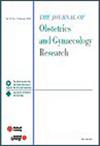Nationwide survey on the transition of treatment protocols after the introduction of insurance coverage for assisted reproductive technology in Japan: The IZANAMI project
Abstract
Aim
How has the treatment policy changed since the introduction of health insurance coverage for assisted reproductive technology (ART) in Japan?
Methods
This study was conducted as a nationwide fact-finding survey to determine the current situation of ART treatment in Japan, the IZANAMI project. Among the 616 ART facilities across Japan, 283 (45.9%) that responded to the first (December 2021–February 2022) and second surveys (December 2023–January 2024) were recruited. Information on the clinical practices was collected via a questionnaire survey and analyzed.
Results
Among the facilities with ≤200, 201–500, 501–1000, 1001–2000, and ≥2000 annual oocyte retrieval (OR) cycles, 93.9%, 88.7%, 75.0%, 69.7% and 42.9% performed ≥80% of their OR cycles using health insurance, respectively (p < 0.001), whereas 51.9%, 53.7%, 41.0%, 40.0% and 12.5% exhibited an increase in number of OR cycles, respectively (p = 0.03). Therefore, a significantly higher proportion of smaller-scale institutions than larger clinics had insured treatment and an increase in the number of OR cycles. Significantly more large clinics than small facilities selected mild stimulation, intracytoplasmic sperm injection, and freeze-all embryo cycle; however, no significant transitions were observed in the main policies for ART, regardless of facility size. However, the indication for mild stimulation significantly increased in normal to high responders, and the choice of ovarian stimulation protocol according to the patient's wishes was significantly reduced.
Conclusions
Small-scale institutions were more likely to offer insured treatment and increase the number of OR cycles than large facilities; however, the main protocols did not significantly change.




 求助内容:
求助内容: 应助结果提醒方式:
应助结果提醒方式:


